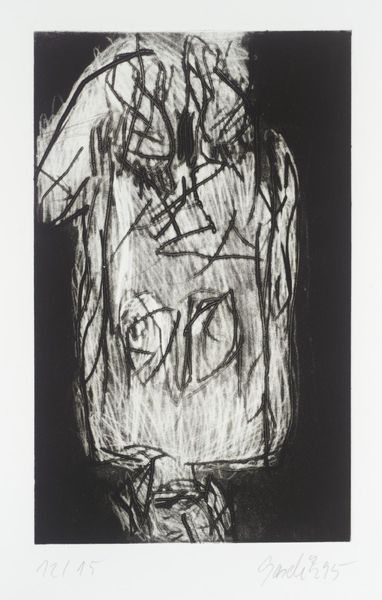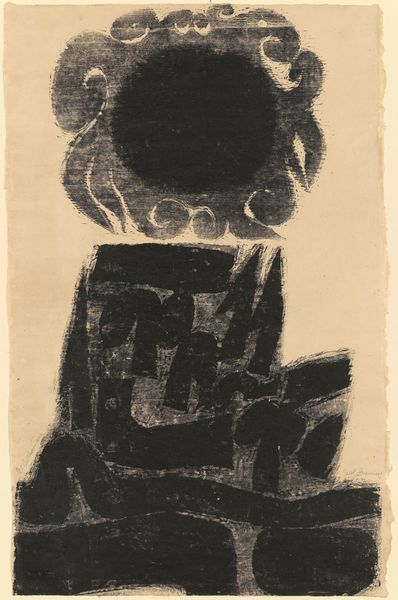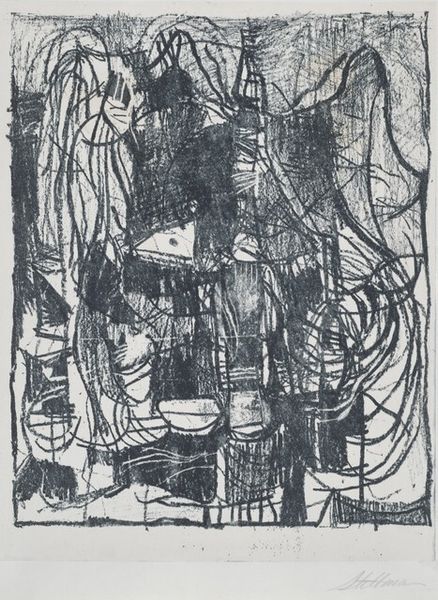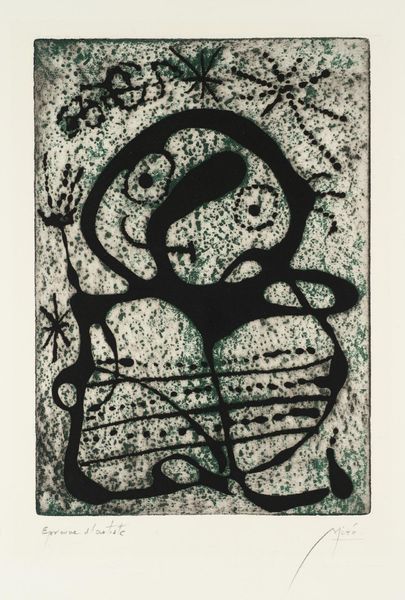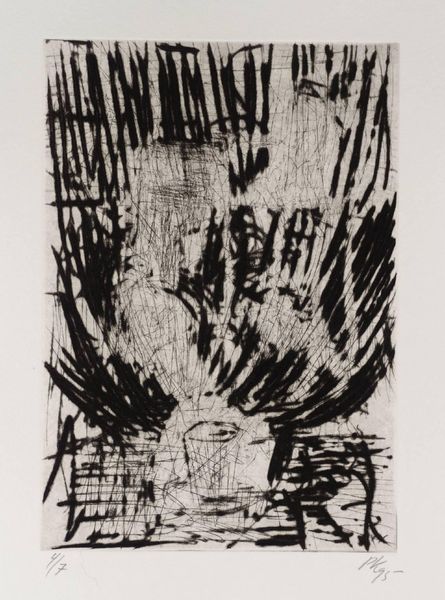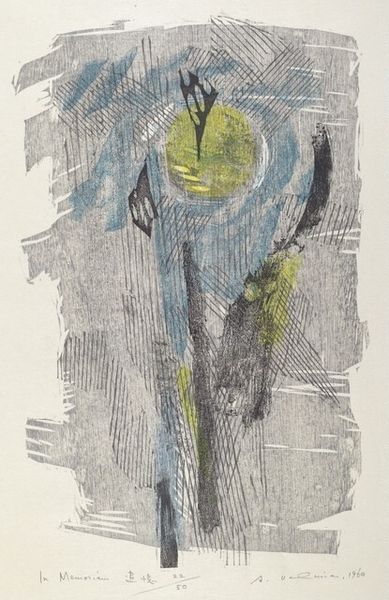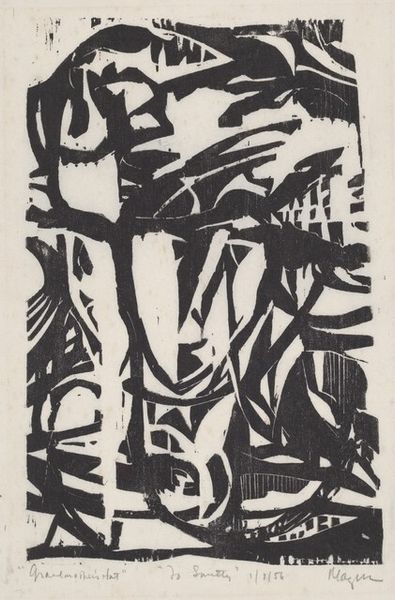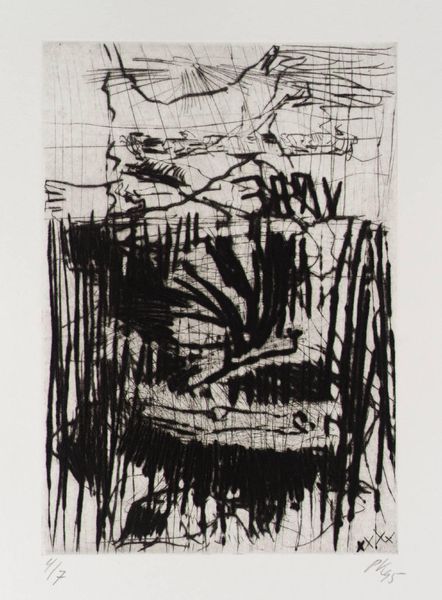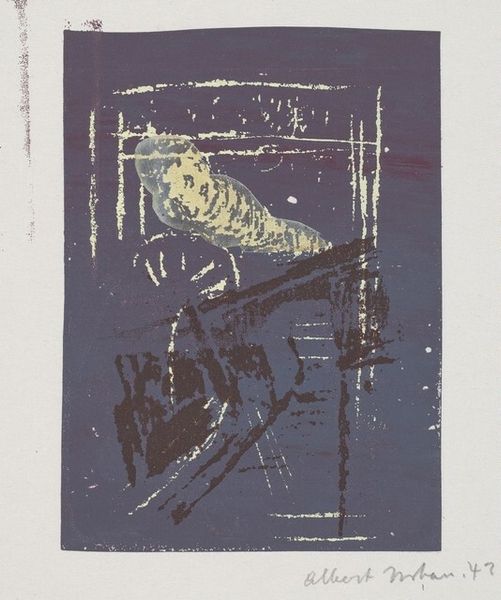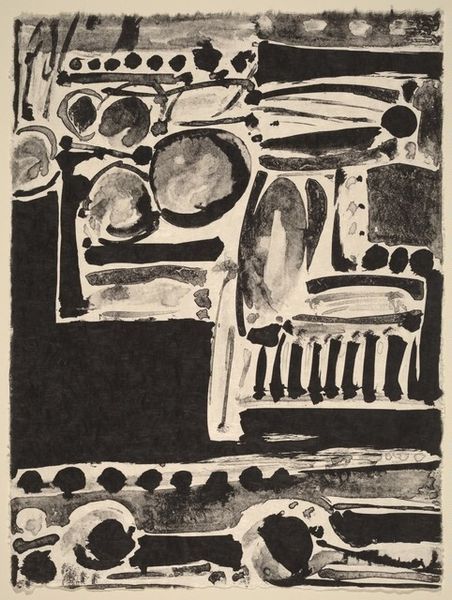
mixed-media, print
#
mixed-media
# print
#
geometric
#
abstraction
#
mixed media
Dimensions: image: 39.5 x 31.8 cm (15 9/16 x 12 1/2 in.) sheet: 59.5 x 46.2 cm (23 7/16 x 18 3/16 in.)
Copyright: National Gallery of Art: CC0 1.0
Curator: Right, let’s have a look at this rather intriguing piece, a mixed-media print from 1958 entitled “Nostalgia in Black” by Ansei Uchima. What are your first impressions? Editor: Oh, it’s immediately striking. The black central void... it feels like a staring eye, doesn't it? Menacing, a bit unnerving. And the fragmented geometry around it seems almost like fractured memories. Curator: Yes, I see that. Uchima’s abstraction here is interesting; the geometric shapes are quite rigid but there are looser textures at play that offset it all. Perhaps this is reflecting how our own recall of memories can be both structured and fragmented. Editor: Precisely. Black, of course, carries huge symbolic weight. Here, I think it suggests both mourning and the hidden recesses of the subconscious. And the limited use of muted colour seems to emphasize the fading nature of the nostalgic process. Are we clinging to memories or are they vanishing before us? Curator: I think it also works with the era the piece was made in. Mid-century art often grappled with themes of identity and uncertainty in the post-war era. Do you feel the piece manages to convey those emotions of ambiguity? Editor: Absolutely. The tension between the defined geometric elements and the more chaotic, textural areas creates a sense of unease, reflecting that era’s grappling with complex questions. It's an introspective artwork, inviting us to face the discomfort inherent in confronting our own past. It’s about unearthing and piecing the fragmented recollections back together, accepting they may never form a perfectly coherent whole again. Curator: I'm intrigued about the "nostalgia" the artist refers to in the title. The composition steers clear of any straightforward iconography; what could this feeling represent do you think? Editor: Perhaps nostalgia for an imagined ideal rather than something real? Or maybe the inaccessibility of some deep, personal experience from his life? Either way it speaks to something deeply human, the quest for meaning. And to be able to get at that through such abstraction is quite brilliant. Curator: I agree. It’s a powerful piece—stark, yet resonant. Editor: A disquieting beauty that lingers.
Comments
No comments
Be the first to comment and join the conversation on the ultimate creative platform.
